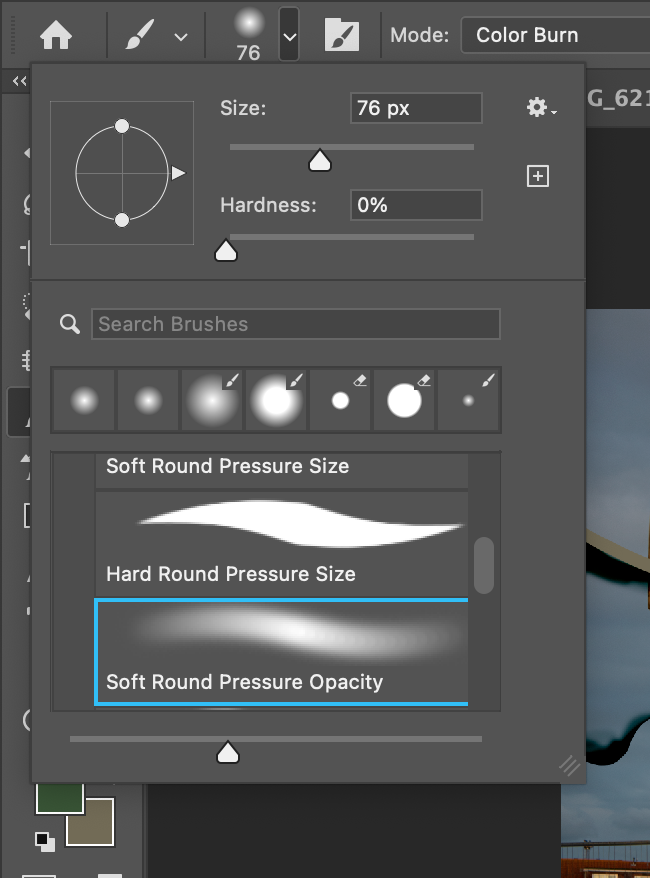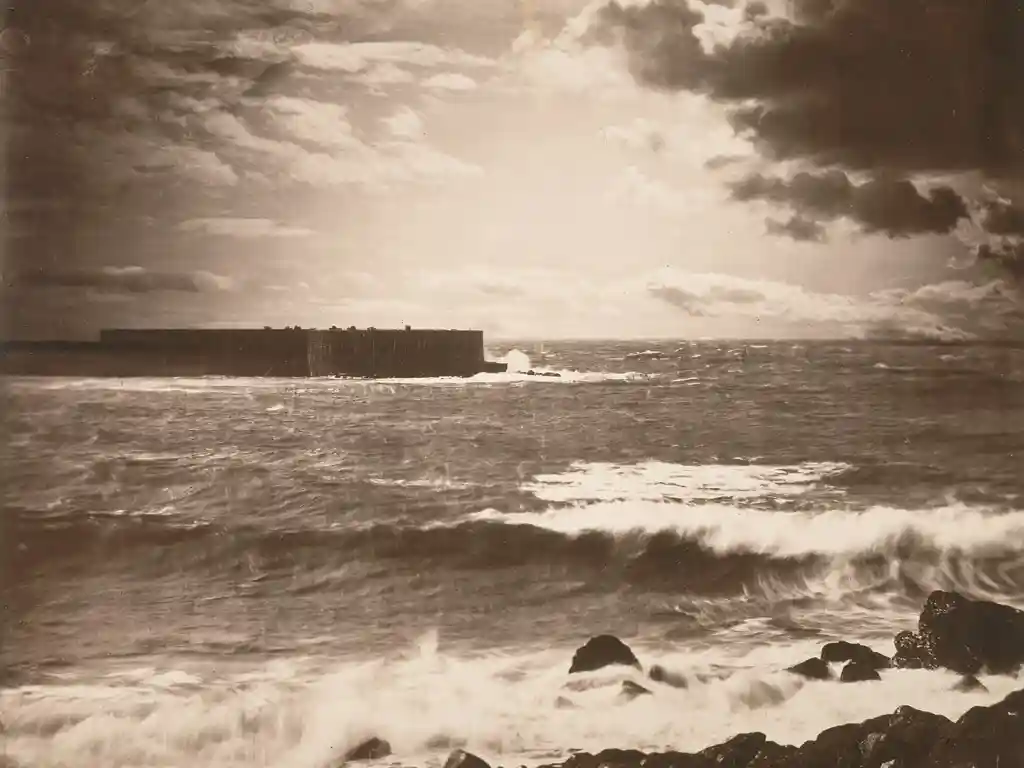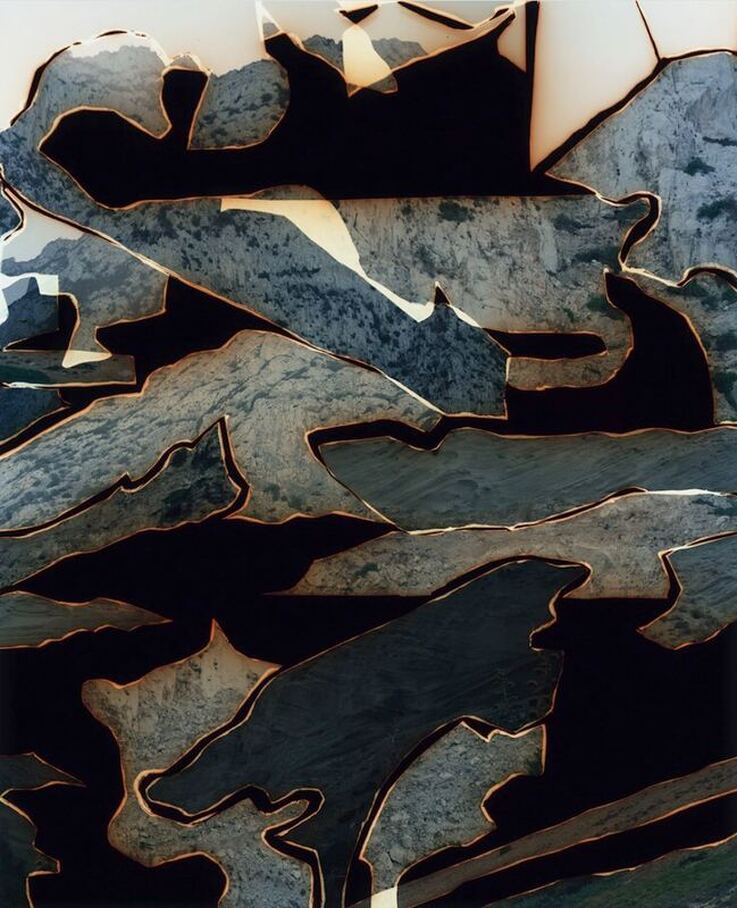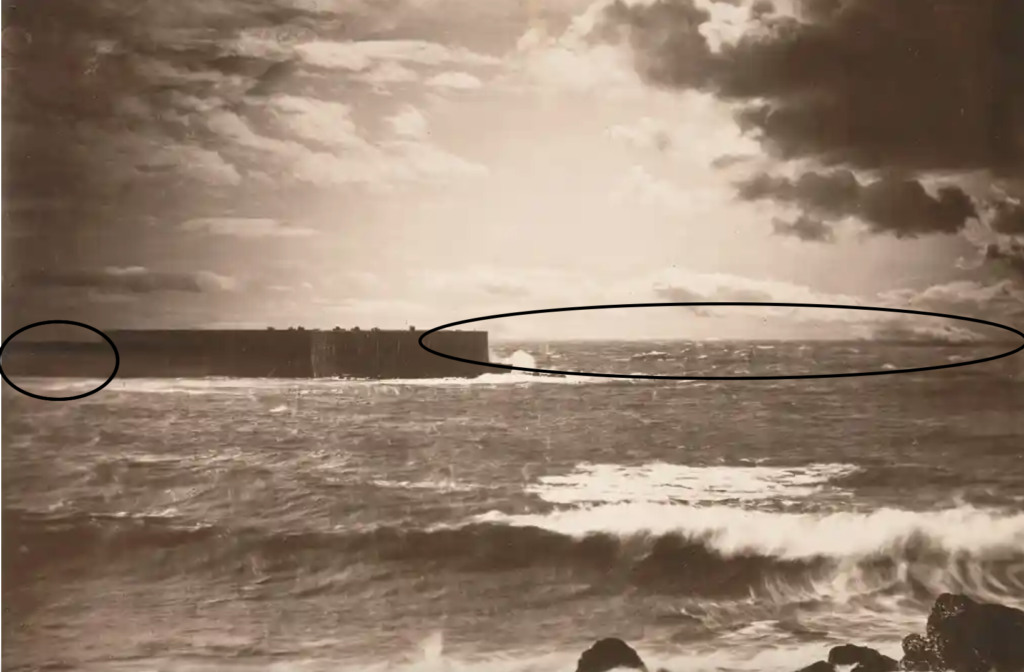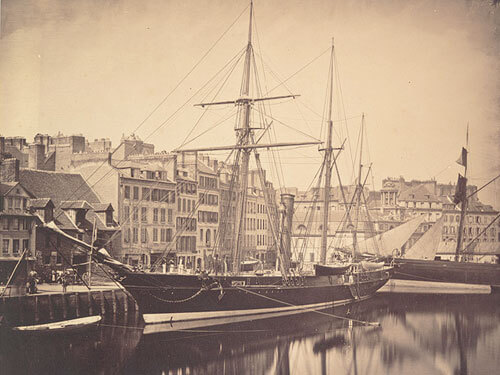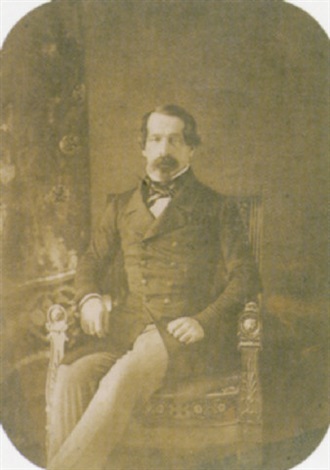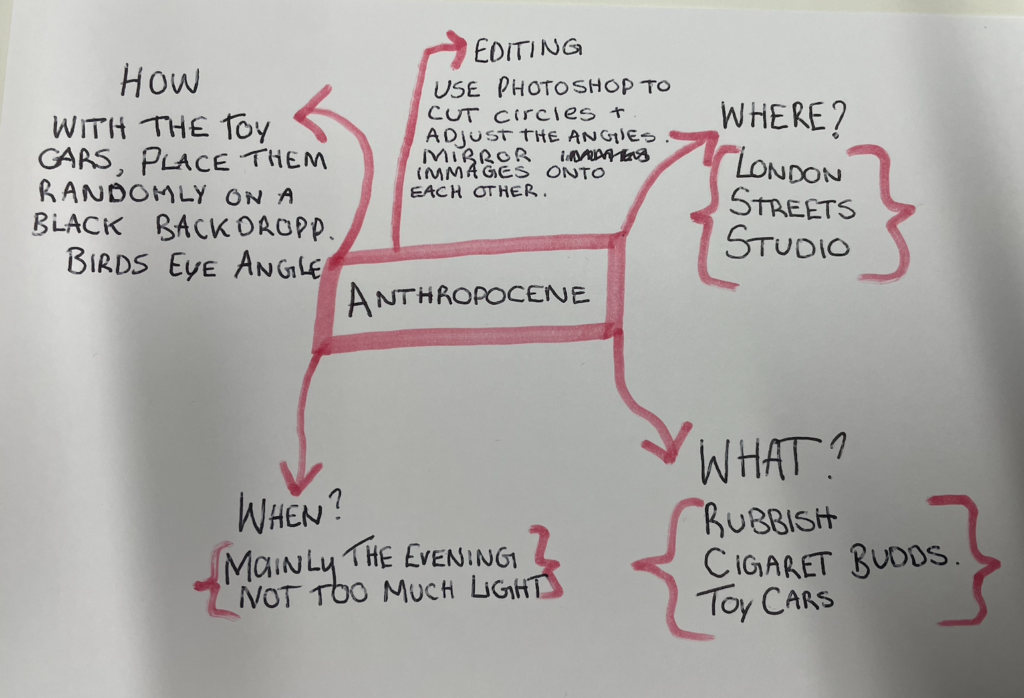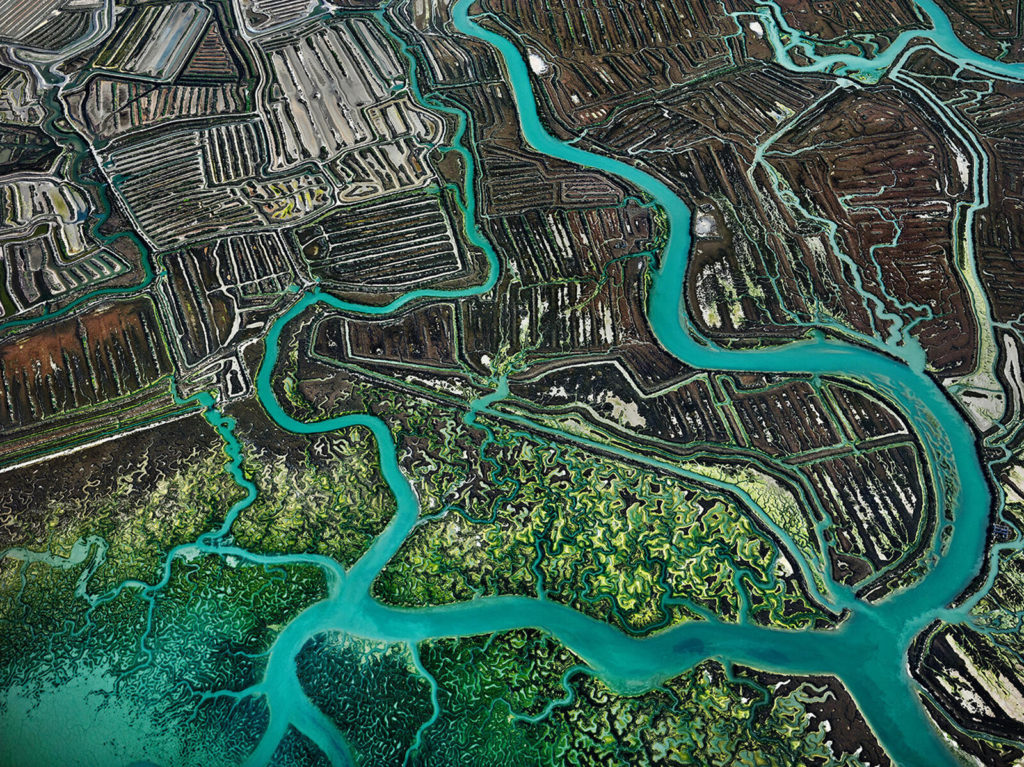Gustave Le Gray: Sea and Sky Photography
Le Gray was born in 1820 near Paris and trained there as a painter. Around 1847 he took up photography. Even before making the marine images, he became one of the most renowned pioneers of the new art. His architectural, landscape and portrait photographs, his writings, teaching and inventions were all highly influential.
The Great Wave, the most dramatic of his seascapes, combines Le Gray’s technical mastery with expressive grandeur. He took the view on the Mediterranean coast near Montpellier. At the horizon, the clouds are cut off where they meet the sea. This indicates the join between two separate negatives. The combination of two negatives allowed Le Gray to achieve tonal balance between sea and sky on the final print. It gives a more truthful sense of how the eye, rather than the camera, perceives nature.

Dafna Talmor — Constructed Landscapes
This ongoing body of work consists of staged landscapes made of collaged and montaged colour negatives shot across different locations, merged and transformed through the act of slicing and splicing, ‘Constructed Landscapes’ references early Pictorialist processes of combination printing as well as Modernist experiments with film, the work also engages with contemporary discourses on manipulation, the analogue/digital divide and the effects these have on photography’s status.

comparison
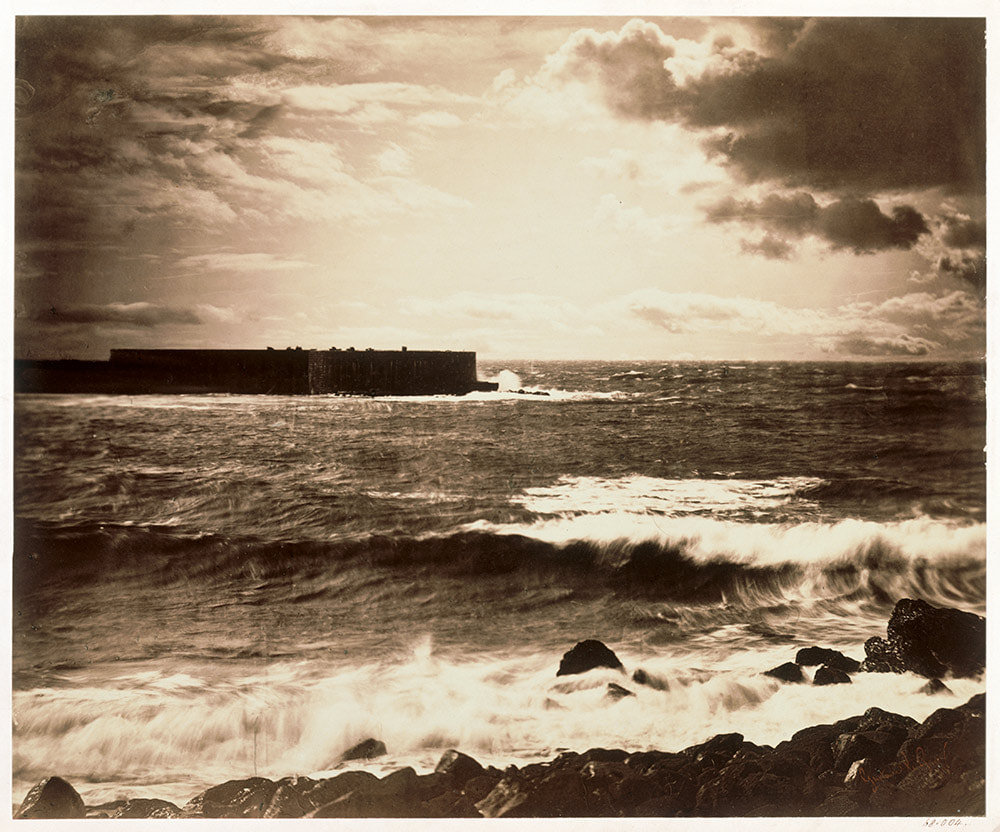
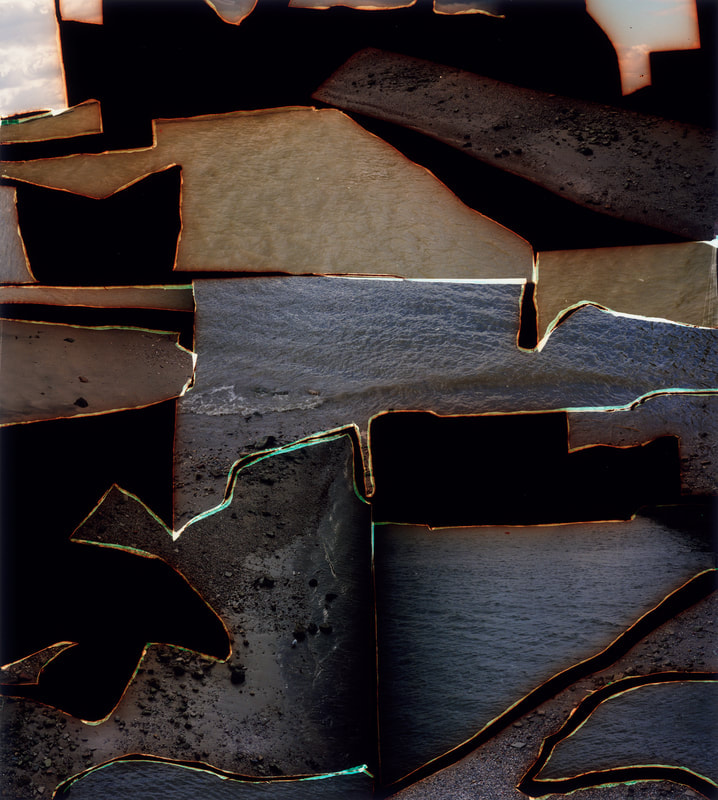
Both the artistes refer to their work as compositions of man made structures and land, its also both described as constructed landscapes as the photo doesn’t show the truth of the content in the photo. The similarities in both their work is that they both have cut up film negatives to create a creative collage to create one photo. Differences within the two photographers is that Le Grays combination of the two negatives he has used has a clean finish and there is not an obvious mark of the merge of the photographs, compared to Talmor her work shows the obvious marks of the film cut up’s.
Both could be described as landscape pictures. What kinds of landscapes do they describe?
Both of these images show two different types of seascapes
What similarities do you notice about these two pictures?
they both have the sea included.
What differences do you notice?
the image on the right is clearly a few different photos collaged together, whereas, the image on the right is less obvious and smoothly put together
What words/phrases best describe each of these landscapes?
dramatic, due to the angry looking clouds in the image on the left as-well-as the dark harsh lines on the right hand side image.
In which of these landscapes would you prefer to live?
i would prefer to live in the image on he right as the photographer has chosen to take out all of the negatives out of the image.
Images i created:
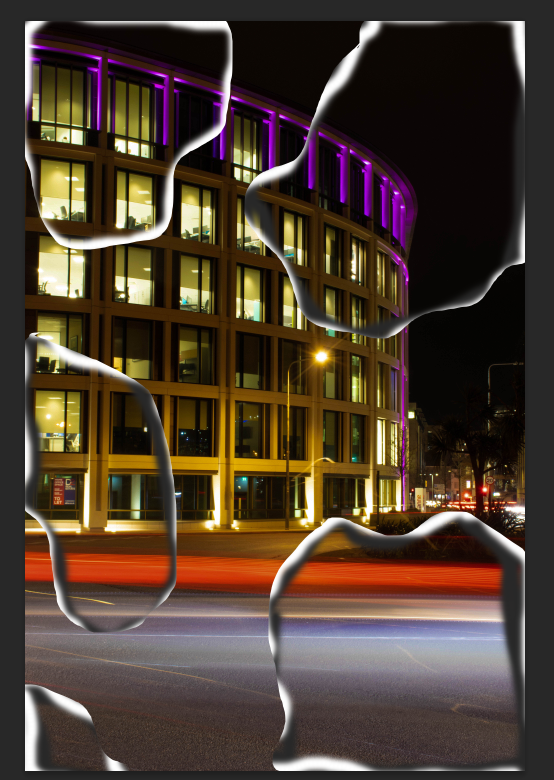
i used the Lasso tool on photoshop to select the part of the image i wanted to use.
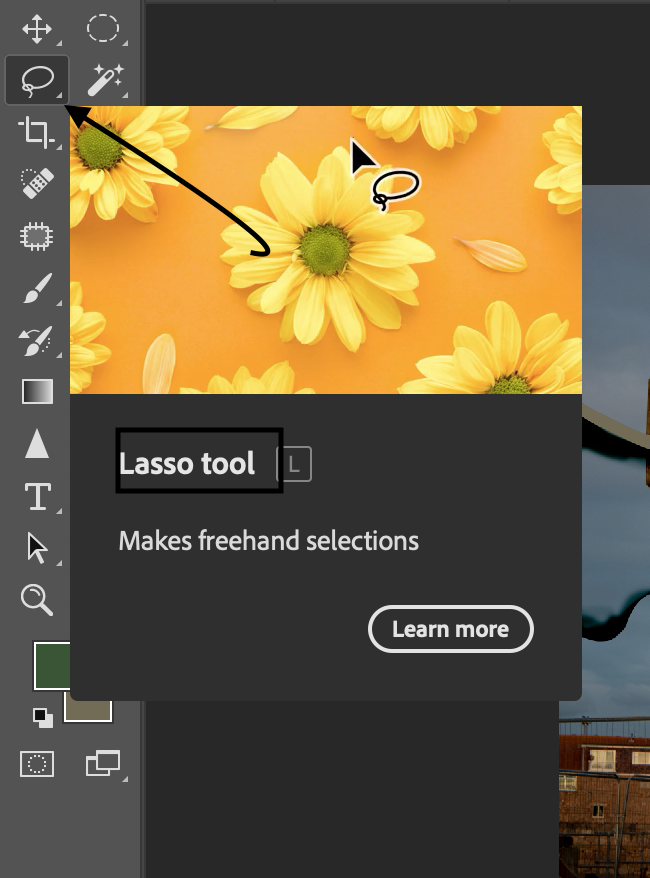
I then used the paintbrush to create the darker parts which Talmor would have used bleach to create it, i turned the harshness of the brush down, made the brush size smaller and turned the opacity down and proceeded to go over the outline on the parts i cut out.
